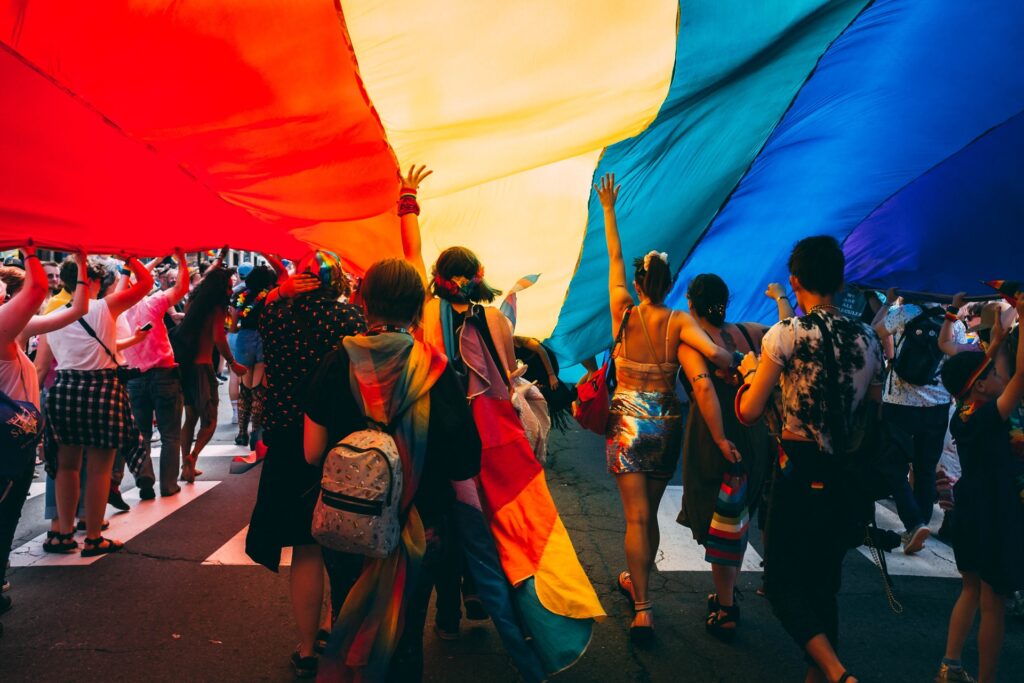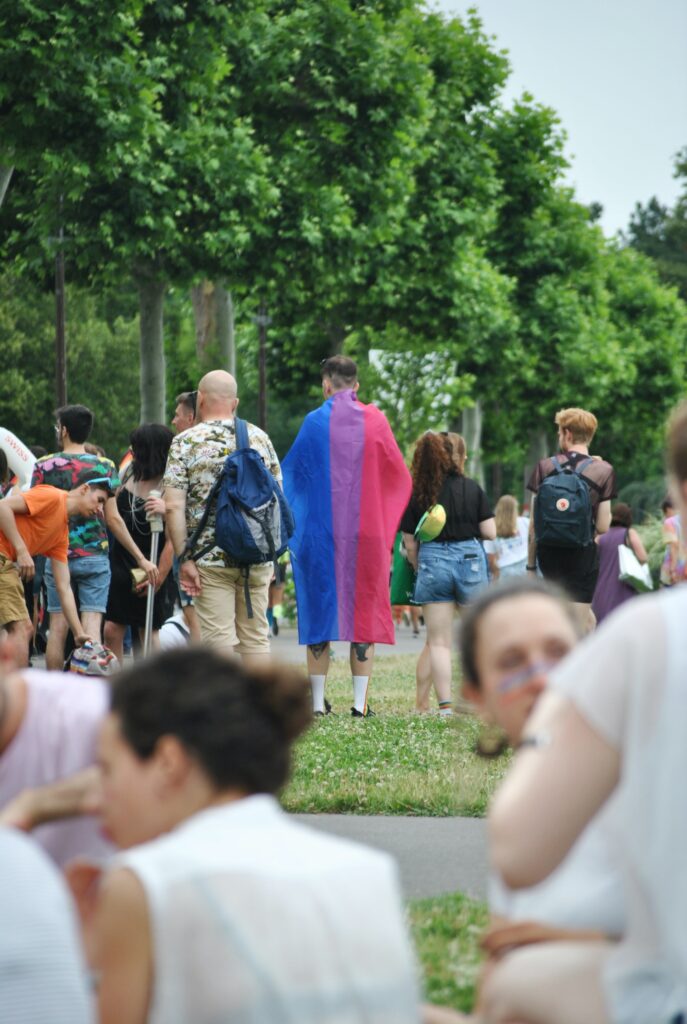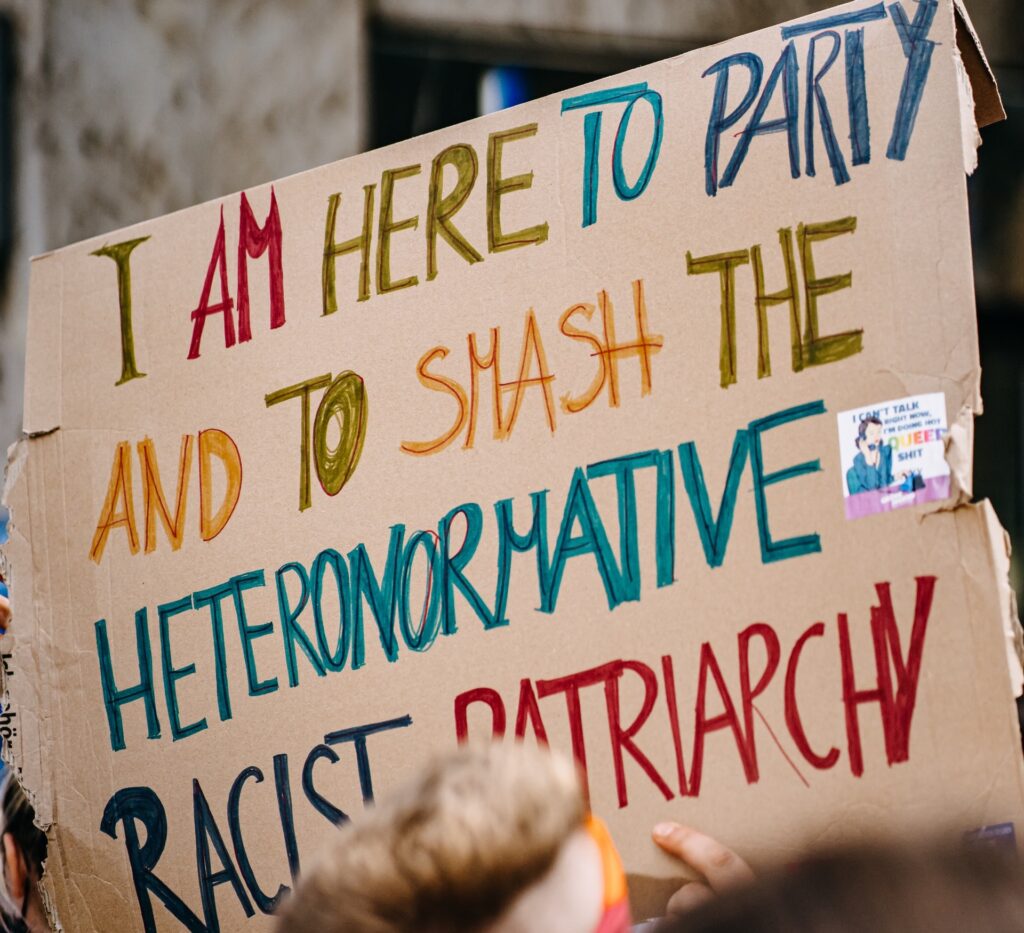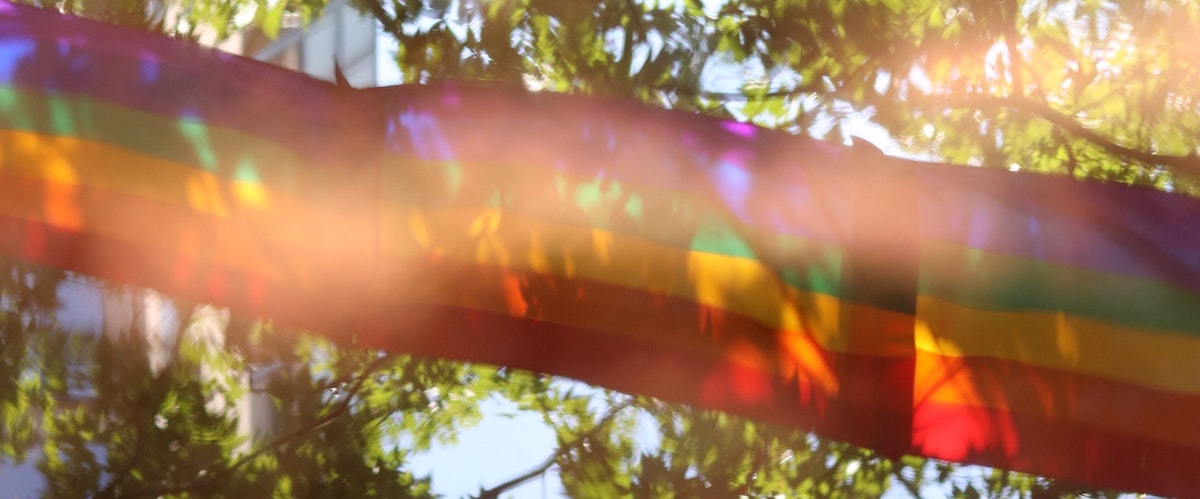With June coming to an end, for many, this also means the end of this year’s pride month. This month is an invitation to celebrate and represent the LGBTQIA+ community – to be seen and heard in all achievements and struggles that remain.
The Pride parade in particular embodies the notion of visibility and directly links the concept of pride with that of being seen. However, the visibility of the LGBTQIA+ community is a historically somewhat recent phenomenon that is fragile and, often, not fully established yet despite the growing awareness on the topic. Thus, erasure and invisibility are prevalent difficulties that queer people face in their daily lives.

Historical Invisibility of the LGBTQIA+ Community
Invisibility is not a new concept within the LGBTQIA+ community. In history, many traces of non-heterosexual orientation have been erased or overwritten in order to fulfill heteronormative expectations that mainly arose from European and Christian ideals and brought to other countries during colonization. Often invisibility was and sometimes still is used by members of the LGBTQIA+ community as a necessary safety measure.
1969 marked a year of great change for people of non-heterosexual orientation in the United States but also had an impact on communities worldwide. While historically, LGBTQIA+ activism was not uncommon, it was not until June 28th of that year, the first day of the Stonewall uprising, that the movement experienced a tipping point. Now, every year in June this impact is remembered and people come together to celebrate and be proud of who they are. Though Pride is celebrated throughout the year, many countries other than the US also choose the month of June for parades and celebrations.
Despite the ever-growing visibility of the LGBTQIA+ community, there continue to be many shortcomings that demonstrate that silencing and erasure still pose a threat to the goal of equality for all people of diverse orientation. A prominent example in history is the “Don’t Ask, Don’t Tell” policy used by the American military that was in effect between 1994 and 2011. This policy allowed people of diverse sexual orientation to serve in the military as long as they’d refrain from speaking about or acting upon their preferences.
It was only after 2011 that the Obama administration lifted the policy that people were able to enlist in the military regardless of their sexuality. In 2019, the Trump administration decided to partially reinstate the policy by banning transgender people from joining the military, but this decision was overturned under Biden in 2021. Recently, the so-called “Don’t Say Gay” bill has come into effect in Florida, which prevents educators to discuss sexual orientation and gender identity in primary school. These, among many other examples, illustrate not only the fragile state that LGBTQIA+ rights are in but also the necessity for continuous activism. Otherwise, certain political decisions or tendencies can set back positive developments into a tradition of invisibility and erasure.
Invisibility and Erasure

Both invisibility and erasure are topics that the LGBTQIA+ community faces frequently. In this context, a certain kind of invisibility is often self-imposed. Whether out of necessity, self-preservation, or convenience, invisibility brings with it some advantages when it conceals an identity that is non-conforming to the societal standards of the time.
Erasure, in contrast, is often used in a broader societal and cultural context. Traces of non-heteronormative existence are erased from the context and surroundings of a particular society. This might range from non-inclusive bathrooms to language use but can go as far as being excluded from medical research, so that certain groups of people have limited health data available, among other things.
Misty Gedlinske, author and advocate for LGBTQIA+ rights, argues that erasure can occur from without as well as from within a certain group of people. Bisexuality is only one of many examples that shows the intricacies of erasure and invisibility for people that identify aside from what is viewed as the norm.
“Erasure says to bisexual men, "Yeah, you're really gay and just don't want to say so." Erasure expects bisexual women to prove it, usually in performative ways.” – Misty Gedlinske
Bisexuality, often more than other queer identities, is deemed to be “just a phase”. Statistically, up to 5% of the population in the United States self-identify as bisexual, up to 37% have had sexual experiences with both same and different-sex partners, and up to 46% have experienced varying degrees of same and different-sex attraction. Additionally, as part of self-identification, it does not exist to be fetishized or to cater to other people’s fantasies and does not gain validity through performance. Still, these preconceptions persist and continually devalue and erase bisexual experiences.
“Keeping erasure at bay means coming out over and over again, answering questions that other people don’t get faced with, trying not to sound too defensive, and doing your best not to disappear.” And if dealing with the effects of erasure becomes too difficult to bear, choosing invisibility often seems the better, less painful option.
This choice brings with it a number of serious problems that put bisexual people at risk. Gedlinske warns that not disclosing sexual orientation to the relevant health professionals can lead to disadvantages in mental and physical health such as heart disease, cancer, obesity, anxiety, addiction, and depression. Additionally, since most educational programs are focused on heterosexual practices, bisexual people, just like many other people of different sexual orientation, are more likely to be inadequately informed about STI prevention and their own sexual health status due to a lack of resources and information that aid informed decision making regarding these topics.
Taking Pride in Being Seen

Now, for many people within the LGBTQIA+ community, Pride is not simply a party in the sun. It is also a continuation of the fight that began much before the Stonewall uprising – a fight for visibility, freedom, and equality in all areas of life. An invitation to celebrate how far we’ve come. An invitation to continue on the way that is still ahead, which for Austria, includes the struggle against conversion therapy targeting minors.
This form of pride does not only extend to those identifying as part of the LGBTQIA+ community. Instead, allyship is an essential tool to combat erasure and eliminate the need for invisibility. Creating a safe space and a support system for those struggling to come to terms with their identity in a cultural climate that is only growing slowly toward equality, has an immeasurable impact on those trying to be seen for who they are.
In our efforts towards equal rights and free expression of identity, we must remember to include all those who carry the burden of erasure instead of further marginalizing and erasing their experience. To learn more about bisexual erasure, watch Misty Gedlinske’s talk at TEDxOshkosh.
Header image by Cody Chan on Unsplash
Reviewed by Anita Ghoreshi. Proofread by Cosima Rudigier.

